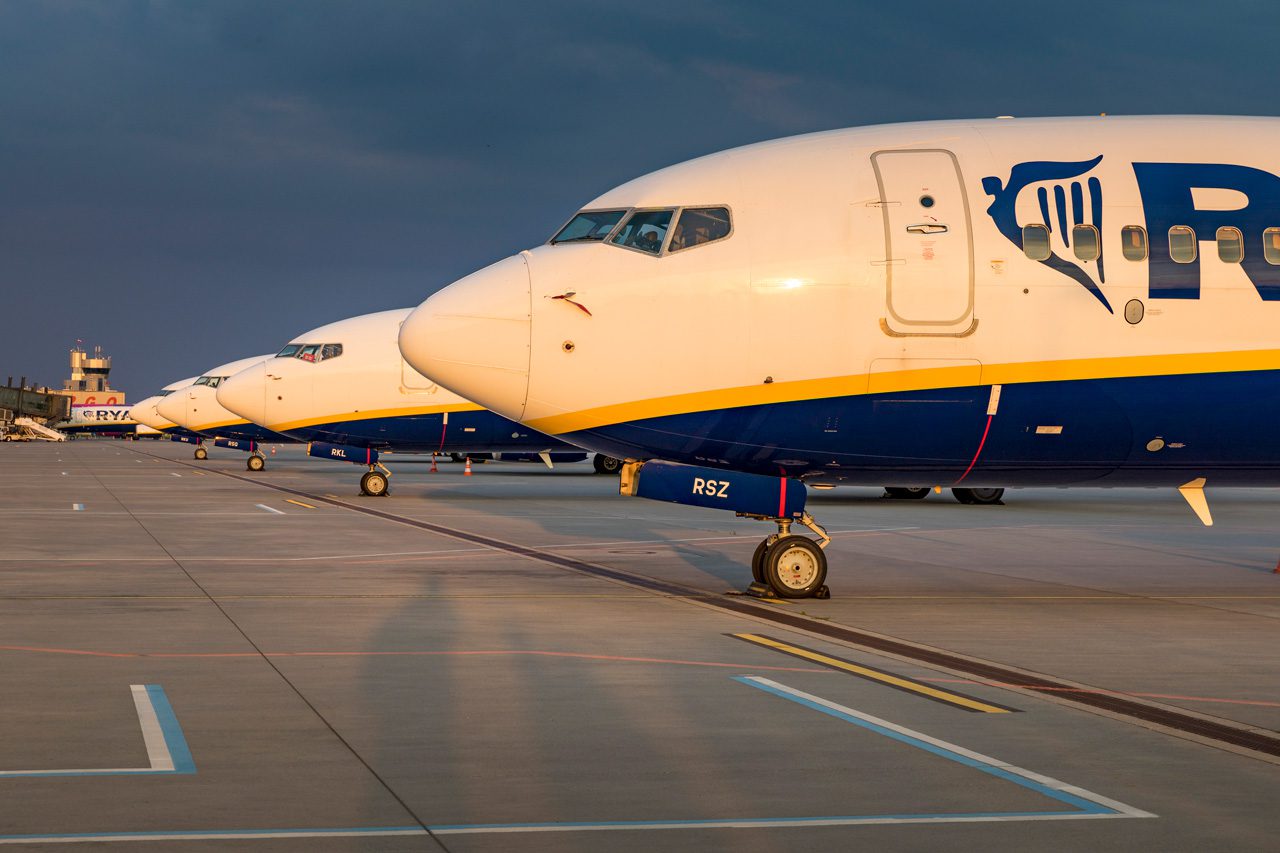
Piotr Mitelski Comp 5
Ryanair is being “wary and cautious” on new Covid-variants popping up in the next three to six months. Without them, the Irish carrier should have a strong end of its FY22 and start of FY23, which begins in April. Omicron has spoiled December, January, and part of February, but the low-cost carrier expects a strong recovery from mid-February. This should lead to 114-115 percent capacity in the coming summer, it said on January 31 in its Q3 results. Price stimulation continues to eat into Ryanair’s yields.
The October-December quarter started strong, but after the emergence of Omicron and the “media hysteria” that caused governments to go into new restrictions, the crucial Christmas season partly collapsed. Instead of the projected eleven million passengers, Ryanair carried 9.5 million in December. It responded with a 33 percent capacity reduction for January. It now expects to carry around seven million passengers this quarter, the high-end of its previous guidance of six to seven million.
During Q3, Ryanair reported a €96 million net loss compared to €321 million in the same quarter in 2020. Revenues were up to €1.47 billion from €340 million, with ancillary revenues eight percent higher to €22 per passenger. The airline carried 31.1 million passengers this quarter, up from 8.1 million in Q3 FY2021. The load factor was 84 percent, the highest of all European carriers. Operating costs increased 136 percent to €1.59 billion, mainly due to higher variable costs like fuel, operating and handling, and route charges, offset by fuel efficiencies by flying more Boeing MAX aircraft.
The Irish carrier said in 2020 that it would no longer fully hedge fuel. It has hedged over sixty percent of fuel for the current fourth quarter with jet swaps and caps. In the first six months of FY23 (April-September), fuel has been hedged eighty percent and the second half at seventy percent. It also has fully hedged carbon credits for the full FY22 and eighty percent of FY23.
Ryanair bussy recruiting pilots and cabin staff
Despite the capacity reduction for this month, Ryanair keeps all its staff current. It has agreed on new and extended pay deals with employees. Currently, some 1.000 pilots and up to 2.000 cabin crew are being recruited and trained, with up to 6.000 new staff to be recruited in the five next years. The carrier says it has no staffing issues right now, but labor flexibility in the post-Brexit UK is causing some concerns.
It also negotiated new long-term contracts with various airports and will open fifteen new bases and 720 new routes, although it ended its contract with Frankfurt Airport as it thought its fares are too high. The airline will base some 21 aircraft in Vienna to strengthen its position here and grow capacity in Ireland and Portugal too.
At the end of December, Ryanair had just under €3.0 billion in cash plus €10 billion in assets, including ninety percent as an unencumbered fleet. Total debt stood at €5.1 billion, of which €2.1 billion in net debt, down from €2.3 billion in March. The airline plans to reduce its debt as quickly as possible. It already repaid £600 million it received in payroll support under the UK’s CCFF facility in October, five months earlier than was scheduled.
MAX 8200 fleet to grow to 65 this summer
On the fleet, Ryanair has grown its MAX 8200 ‘Gamechanger’ fleet to 41 until December 31, thanks to higher deliveries from Boeing. It expects another 24 aircraft until this summer to bring the total to 65 MAX 8200s, a year later than originally planned. The carrier has 210 high-capacity MAX on order, which will be distributed over Ryanair, Malta Air, and Buzz. Fuel burn of the MAX is better than the advertised sixteen percent. Buzz currently has 55 Boeing 737-800s and MAX 8200s, Malta Air some 140, Lauda 29 Airbus A320ceo’s, and Ryanair UK operates with just under ten aircraft.
CEO Michael O’Leary said that he currently isn’t in negotiations with Boeing or Airbus for more aircraft. He still regretted that he and Boeing have been unable to clinch a deal on the MAX 10 after they couldn’t agree on the price.
The recovery that Ryanair is seeing with close-in bookings from mid-February comes at a price. It continues price stimulation with low fares to keep load factors up, but this eats into its revenues and yields. “Pricing remains very sensitive to new flow In our build-up, we are aggressively selling low fares than we would have before”, said O’Leary.
It maintains its FY22 guidance for a €250 to €450 million full-year loss and 100 million passengers carried. But if the recovery continues, Ryanair should be on track to grow to 225 million passengers in FY26. For this, it will need a fleet of 620-630 aircraft, so it has decided to keep some of its Boeing 737-800s on for longer instead of selling them off.
Views: 1



